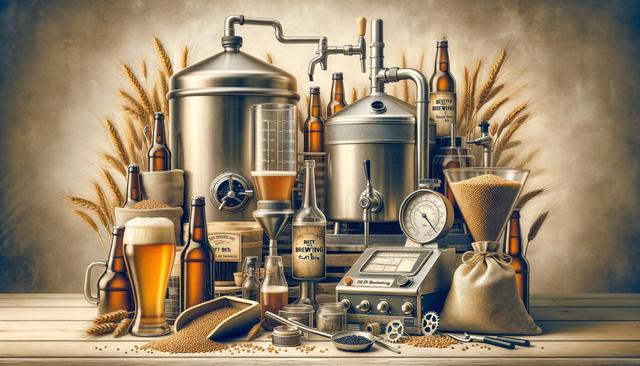Home Brewing 101: Crafting Your Own Beer at Home
If you’ve ever been curious about crafting your own brew, home brewing is an exciting and rewarding hobby that lets you create personalized flavors right in your kitchen.

The Essentials of Home Brewing
Home brewing has gained significant popularity among enthusiasts eager to explore the world of craft beer from the comfort of their own homes. At its core, home brewing involves fermenting malted grains with water, hops, and yeast to produce beer. To get started, you’ll need some essential equipment and ingredients. Most beginners invest in a basic home brewing kit, which typically includes:
- A fermentation vessel, often a glass carboy or plastic bucket
- An airlock to allow gases to escape during fermentation
- A hydrometer to measure the gravity of your brew
- A siphon and tubing for transferring your beer
- Bottles and caps for storing your finished product
In addition to equipment, the primary ingredients you’ll need are malt extract (or malted grains if you’re going all-grain), hops for bitterness and aroma, yeast for fermentation, and clean water. These components form the foundation of your brewing process, allowing you to experiment with different styles and flavors.
The Brewing Process: Step by Step
Understanding the brewing process is crucial for crafting your own beer at home. While methods can vary depending on the style you’re aiming for, the basic steps remain consistent. Here’s a general overview:
- Mash: Combine malt extract or grains with water and heat to activate enzymes, breaking down starches into sugars.
- Boil: Add hops to the hot liquid, which contributes bitterness and aroma. This step is crucial for balancing the sweetness of the malt.
- Fermentation: Transfer the liquid to a fermentation vessel, add yeast, and seal with an airlock. Yeast consumes the sugars, producing alcohol and carbon dioxide.
- Conditioning: Once fermentation is complete, transfer the beer to bottles or a keg for conditioning. This process enhances flavors and carbonation.
- Bottling and Aging: If bottling, add a small amount of sugar to initiate carbonation, then seal. Allow the beer to age for several weeks to develop its full flavor profile.
With practice, you’ll refine your technique and start experimenting with new recipes and ingredients, adding a personal touch to your creations.
Exploring Different Beer Styles
The beauty of home brewing lies in its versatility. You can create a wide array of beer styles, each with unique characteristics. From hoppy IPAs to rich stouts, the options are endless. Here are a few popular styles you might consider:
- IPA (India Pale Ale): Known for its strong hop flavor and aroma, IPAs are a favorite among craft beer enthusiasts.
- Stout: A dark, rich beer with flavors of chocolate and coffee, perfect for those who enjoy a robust taste.
- Wheat Beer: Light and refreshing, wheat beers often have citrus and spice notes, making them ideal for warm weather.
- Pilsner: Crisp and clean, pilsners are a classic lager style with a balanced malt and hop profile.
Experiment with different grains, hops, and yeast strains to create your unique beer. The possibilities are limited only by your imagination and taste preferences.
Common Challenges and Tips for Success
Home brewing, like any craft, comes with its challenges. Beginners often face issues like contamination, inconsistent carbonation, or off-flavors. However, with some patience and attention to detail, these hurdles can be overcome. Here are a few tips to improve your brewing success:
- Sanitation: Ensure all equipment is thoroughly sanitized to prevent contamination by unwanted bacteria or wild yeast.
- Temperature Control: Maintain stable temperatures during fermentation, as fluctuations can impact flavor development.
- Recipe Precision: Follow recipes closely, especially when starting out, to understand how different ingredients affect the final product.
- Record Keeping: Keep detailed notes on each batch, recording ingredients, temperatures, and fermentation times to refine your process over time.
- Patience: Allow adequate time for fermentation and conditioning. Rushing the process can result in underdeveloped flavors.
By embracing these practices, you’ll enhance your brewing skills and produce increasingly refined and enjoyable beers.
Conclusion: Embrace the Craft
Crafting your own beer at home is an enriching journey that combines science, creativity, and a passion for flavor. As you delve into the world of home brewing, you’ll not only develop a deeper appreciation for the art of beer making but also enjoy the satisfaction of sipping a brew you’ve crafted from scratch. Whether you’re brewing for personal enjoyment or sharing your creations with friends and family, the experience is both rewarding and educational. So gather your equipment, select your ingredients, and embark on this delightful adventure into the world of home brewing.